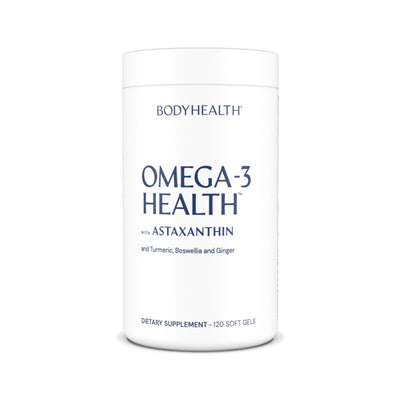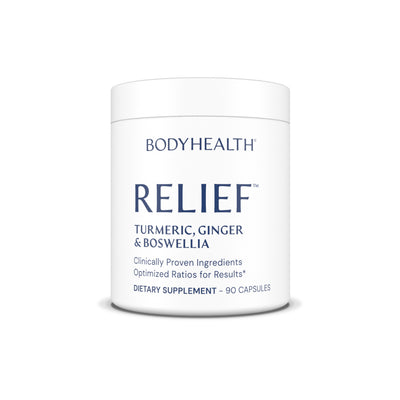Measuring Our Health: What Is Heart Rate Variability
April 16, 2023 5 min read

The body is a complex contraption, full of very exact systems, and a thousand different factors influencing its overall health and performance in one way or another.
But how do we separate out the important factors that allow us to measure our overall health and spot potential health troubles before they become a real situation?
There is something called Heart Rate Variability, or HRV, and it is a literal measuring stick for our health that we can use to monitor ourselves.
Whether we're into extreme sports and maximum physical performance, or trying to achieve optimal health for a long life, learning what HRV is, and how to use it, puts our health and performance in our hands.
This helps us spot trouble when it’s still a ways away, so we can handle it before it gets out of hand.
WHAT IS HEART RATE VARIABILITY (HRV)
While Heart Rate measures the amount of beats per minute of your heart, and Resting Heart Rate measures the amount of beats per minute when your body is at rest (not active), Heart Rate Variability measures the natural variation in time between beats.
When we measure heart rate (how many beats per minute), we’re getting a large picture of how the heart is doing. For example, if we’re running or exercising, our heart speeds up. Then, when we’re resting, it slows down.
If it was speeding up while we were at rest, we’d know we had a problem.
But while Heart Rate shows us the big picture, Heart Rate Variability, or HRV, shows us the smaller details of how things are doing internally.
This is because it’s controlled by our Autonomic Nervous System, the system that controls the involuntary functions in our body: breathing, digestion, heart rate and blood pressure.
It’s the system that controls our organs, that sends messages to wake us up or put us to sleep, that oversees cellular repair and recovery and tells the hormones when to go to work or not.
And measuring our Heart Rate Variation is our way of seeing how the Autonomic Nervous System (ANS) is doing, and how able to it is to keep everything running and deal with the stresses we put on it, or not.
But while we want our Resting Heart Rate to be lower, we want our HRV to be higher — greater variation.
This is because the more our ANS is able to vary the time between beats, the more able it is to address stress or needs we put on it.
And a lower HRV, less variation, indicates that our body’s ability to deal with stress (physical, mental and emotional) is less, and that it’s very possibly dealing with things we may not know about.
HRV gives us a snapshot of the body’s ability to recover, how able it is to recover from illness, injury, or just the stress we put on it daily.
It shows us the pain and inflammation levels of the body, even when they’re hidden (yes, they can be hidden when long-term, as we can gradually go numb to them, causing problems we don’t see), and how well our body is able to deal with them.
It shows when the body or mind is stressed, when cortisol levels are high, when inflammation is high, when we have a possible hidden infection, and if our nervous system is ramped up in fight or flight mode when it shouldn’t be.
These stress points build up in the body, overloading the Autonomic Nervous System. The more individual stresses we have on us, internally or from life, the lower our body’s ability to deal with things becomes.
That’s what HRV shows.
This is a very important indicator of overall health and what the body may be coping with that we don’t see.
When we ignore it, or don’t know about it, it can lead to drastically reduced health, poor athletic performance, and slow recovery from illness or injury.
For instance, we could check our HRV and see that it’s low and say, “well, yes, I’ve not been sleeping well and need to get more sleep,” or, “I’ve been over-training, I need to let my body rest for a day or two.”
These would be points that are putting too much stress on our body and raising cortisol levels.
But what if it was low and we didn’t know why?
Now we can have it checked into: Is it low amino acid levels causing inability to recover? Too much sugar? Inflammation in the blood vessels? A hidden infection? Liver or kidney trouble? Heart trouble?
Or is it a number of things, any one of which, lowered, would raise the body’s ability to deal with the rest.
HRV alerts us to something going wrong inside the body so we can then find out what it is, and address it before it becomes a situation.
It gives a way to be in control of our health.
Even if there is nothing majorly wrong, if too many stress points build up, then over time things will go wrong.
If we know this, we can start spotting individual points of stress and remove them, raising the body’s overall ability to handle the other stress points.
We don’t have to handle them all, we just need to remove them to the point that our nervous system isn’t overloaded with them, so it can deal with the rest.
This makes a drastic difference in our energy levels, mood, strength and ability to recover from workouts, injuries or just day-to-day life.
ADDRESSING STRESS & HEART RATE VARIATION
There are many ways for us to measure HRV. One of the best, currently, is something called the Oura Ring.
You wear it and it connects up to an app on your phone, and you’re able to measure not just your HRV, but other points affecting your HRV: how much sleep you’re getting, how much deep sleep you’re getting, and even your body temperature and calories burned, which show us how our metabolism is doing.
By knowing our HRV we can now spot when we need to pull back from a workout or training session one day to get a bit more rest, or not work quite so late one night, or take a walk or get more amino acids, etc., before we really overload the body.
We can spot when something isn’t right and get it checked out and handled before it becomes a situation.
And we can see when our body is stressed (which will also cause us to feel stressed) and know that we need to remove some of the stress points we can see, to help the overall so things don’t start going very wrong.
It truly is very powerful.
As a first step to lower any stress, and give the body what it needs, make sure you’re taking your PerfectAmino, so no matter what you throw at your body, it has what it needs to recover.
Body Health Relief also helps to lower Cortisol levels, lowering stress in the body as well, along with Omega 3 Health.
I highly recommend you check these out and take them.
You’ll notice quite the difference, both physically and mentally.
Read the next article in the seriesArticles by Health Topic
Your Path To Better Health Starts Here!
From in-depth articles on nutritional benefits to updates on new product launches, stay informed and inspired on your journey to optimal health.
*These statements have not been evaluated by the Food and Drug Administration. These products are not intended to diagnose, treat, cure, or prevent any disease.


